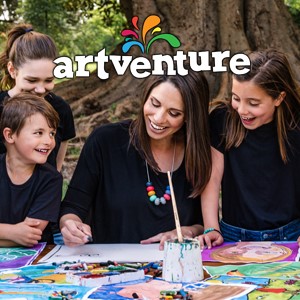Making a bird feeder that brings some of our awesome birdlife to your backyard doesn’t have to cost a fortune nor take any special skills. In fact, our 3 and 12 year old helpers were able to make the 3 different types below with almost zero adult assistance – so they are definitely a great holiday activity for the kids. The shaped cookie cutter ones also make awesome home made gifts as well. When we first started feeding our local wild birds with our DIY bird feeders we used the generic ‘parrot’ food from a supermarket. We realised that the birds that visit us don’t like certain seeds in that mix though and have moved to buying 1 pack of sunflower seeds and 1 pack of budgie seed mix (both found in the bird food section or our local supermarkets) and mixing them together – this has had great success with our local parrots in Adelaide, South Australia.
Easy Milk Bottle Bird Feeder
This milk bottle design has been going strong in our backyard for over a year now and the parrots still come daily to feed from it!
Ingredients:
- A clean plastic milk bottle or other similar bottle. We used a 3L plastic milk bottle which works perfectly (better than the 2L one we also tried).
- A wooden or plastic chopstick or similar long, thin, strong ‘stick’.
- String to hang it from a tree.
- Bird seed.
Method:
- Cut a large hole in both sides of a clean and dry bottle – at least 3cm above the bottom of the bottle. We drew the ‘hole shape’ on the bottle first to make it easier and had an adult or older child cut the holes out as it can be tricky with the thick bottle plastic.
- Have an adult pierce a hole in each side at least 1.5cm below the openings and thread a chopstick or similar through for the birds to stand on.
- Hang the bottle in a tree by wrapping string around the lid thread and then tightly twisting the lid back or by piercing the bottle with small holes near the top and threading the string through.
- Fill the bottom of the milk bottle with seed and wait for the parrots to find it!

Cookie Cutter Bird Feeder
This easy and fun method for making DIY bird feeders does involve hot water, but is otherwise super fun and easy. The downside is that once the birds do find them they don’t last long!
Ingredients:
- 2 teaspoons of gelatine
- 1/2 cup plain flour
- 1/2 cup boiling water
- 3 cups of wild birdseed
- String
- Moulds – we used cookie cutters
- Cooking oil spray or similar
Method:
- Spray the cookie cutters or moulds with cooking oil or similar spray (so the mix doesn’t stick).
- Boil water and carefully stir flour and gelatin in until dissolved.
- Add bird seed and stir until all combined and all seed is coated.
- Scoop bird seed/gelatin mix into the moulds and press one piece of straw into each mould (to make the hole).
- Press the seed mix firmly into the moulds and around the straw.
- Leave to dry completely (at least 24 hours) before removing from the mould and removing straw.
- Thread string or ribbon through the hole and hang from a tree (or giveaway for cute gifts!).

Easy Cardboard Roll Bird Feeder
These ones are super easy and toddler friendly – although can get messy for younger kids! They involve nothing sharp, hot or otherwise dangerous and the ‘mess’ can be licked clean. Obviously though, stay away from this method for kids with allergies. These feeders don’t last as long as the other 2 methods but are the easiest for youngsters.
Ingredients:
- Peanut Butter – we used Dick Smith smooth peanut butter and seemed to be a hit!
- Cardboard rolls – we made ours from used toilet paper rolls with all the paper removed.
- String – at least 60cm depending on where you need to hang it from.
- Birdseed!
Method:
- Spread peanut butter onto a clean cardboard roll. You want it reasonably thick so lots of seed sticks to it.
- Pour birdseed onto a plate and roll the peanut buttered cardboard in the birdseed until completely covered.
- Thread string through the cardboard roll and hang from tree.
For other DIY projects to do with the kids check out our link here: Build It, Don’t Buy It

















![AFLW-Tickets-[KidsinAdelaide]-[300x300px]](https://kidsinadelaide.com.au/wp-content/uploads/2025/08/AFLW-Tickets-KidsinAdelaide-300x300px.gif)












Hello,
I love the look of this activity and plan to try it with my kidlets today as part of our Christmas prep. I was however wondering how the final product holds up to the Australia summer temperatures? I noticed that a few of the American posts, talk about them holding together up to 18 degrees and we are pushing 35 here most days. How did you find they held up for you?